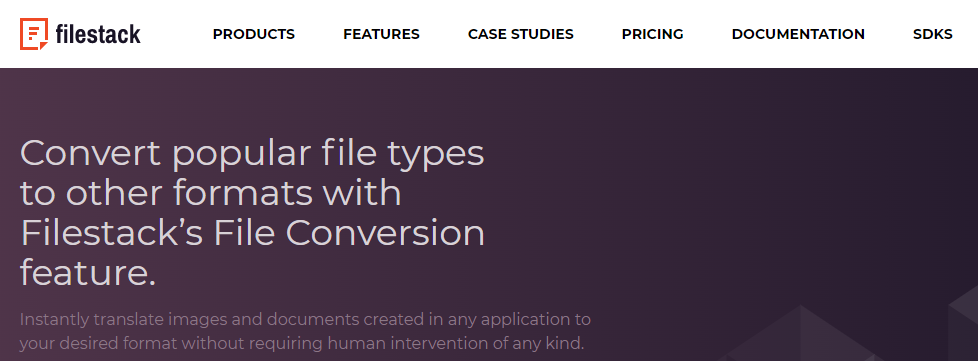In today’s digital world, visual content like images plays a crucial role in providing an excellent online user experience. Almost every company uses images on their web platforms to communicate to their customers, attract users’ attention and improve user engagement. Some web platforms, like social media sites, also enable end-users to upload images through React file upload or Angular file upload. In addition to using images on web platforms, companies also use images for billboards, print ads, and more as a part of their marketing strategy. However, one question most people ask is which image file type they should use. There are several different image file types designed for different use cases. For instance, GIF and PNG image formats are widely used for the web, whereas TIFF is primarily used in the publishing and printing industry.
In this article, we’ll show you the 15 best image file types, along with their use cases and benefits.
What Are Some Of The Best Image File Types?
JPEG
JPEG (Joint Photographic Experts Groups) or JPG is one of the most common image file formats for the web due to its universal OS and browser support and compression. It is essentially a type of raster image with lossy compression, which means the image is compressed to reduce the file size. However, this compression also reduces the image quality.
Benefits
- Low file size, so the image loads quickly
- Quality and compression ratios can be adjusted for optimal file size and image quality
- Universal OS and browser support
Drawbacks
- Image compression can result in poor text readability
Use Cases
- JPEG files are widely used on the web for blogs, articles, product images, and more
GIF
Graphics Interchange Format or GIF is also a type of raster image file widely used on social media these days. GIF format is compressed using lossless compression, but the image is constrained to 8 bits per pixel.
Benefits
- Small and internet-friendly file size
- GIF images can be animated
- All major web browsers support the GIF format
Drawbacks
- Palette is limited to 256 colors
- Reduced image quality due to 8-bit limitation
Use Cases
GIF files are widely used on social media platforms. They also help explain things in tutorials and guides.
PNG
PNG, a raster image file format, stands for Portable Network Graphics. It uses lossless compression, but maintains the detail. PNG was designed to improve the GIF format, as it supports up to 16 million colors.
Benefits
- High-quality images
- Text is clear on images
- Can handle up to 16 million colors
Drawbacks
- High-resolution images can take longer to load and slow down the website
Use Cases
- PNG files are used for banners, infographics, screenshots, blogs, and more
TIFF (Tagged Image File Format)
TIFF is a raster image file type widely used for storing and editing images. Although the TIFF file format supports lossy compression, it mostly uses lossless compression to maintain image quality. However, TIFF files are usually large in size.
Benefits
- High-quality images
- Maintains the color depth and detail of images
Drawbacks
- Browser support is limited
Use Cases
TIFF files are one of the most used image file types for print publishing and high-resolution scans.
WebP
Google developed WebP with the aim of combining the best characteristics of JPG and PNG image file types – compression and quality. These image files can use both lossless and lossy compression, allowing users to choose whether to maintain the image quality or reduce file size.
Benefits
- Good image quality and small file size
- Help save server disk space
Drawbacks
- Not all major browsers and image editing software support the WebP file format
Use Cases
- Many people use the WebP format instead of PNG and JPEG images on their websites to improve speed and save bandwidth
SVG
SVG stands for Scalable Vector Graphics. Developed by W3C, the purpose of this file format is to render 2D images within web browsers. It uses XML instead of pixels to create shapes, text, or illustrations.
Benefits
- Allow users to scale images without affecting the image quality
- All major browsers support SVG files
Drawbacks
- Not designed for images and complex drawings
Use Cases
- The SVG file format is mostly used for simple illustrations, logos, and icons.
Bitmap
Bitmap, or BMP, is a raster graphics image format that creates images using individual pixels without any compression. As a result, the images are of high quality, but the file size is very large.
Benefits
- Supported by all popular web browsers
Drawbacks
- Huge file sizes
- Proprietary
Use Cases
- BMP images are somewhat outdated due to extremely large file sizes
EPS
EPS or Encapsulated PostScript files are one of the most common vector image file types used for storing illustrations in Adobe Illustrator and CorelDraw. Just like SVG, EPS uses a text-based format to create shapes and lines.
Benefits
- Supports lossless scaling of images
- High-resolution images
Drawbacks
- Not supported by major web browsers
Use Cases
- EPS is helpful for high-quality image printing, such as billboards and large posters.
PDF stands for portable document format. When you hear PDF, the first thing that probably comes to your mind is a file type for storing and reading text-based documents. However, PDF files use the same PostScript language that powers EPS vector images and can be used to save illustrations and images.
Benefits
- Allows users to search text within infographics
- Supports several other interactive elements, such as clickable links
- All major browsers support PDF files
Drawbacks
- You cannot include PDF files in web content
Use Cases
- PDF file format is great for infographics, business reports, and more
HEIF
HEIF is an acronym for High Efficiency Image File Format. It is a raster image file that uses pixels to create images. HEIF is like JPEG, but with more efficient compression. As a result, HEIF files are of better quality than JPEG.
Benefits
- High-quality images
- Small file sizes
Drawbacks
- No browser support
Use Cases
- Currently used by some recent smartphones to store images
PSD (Photoshop Documents)
PSD is the standard file format for saving Adobe Photoshop. These files consist of several image layers and multiple imaging options. As a result, modifying these image files is much easier.
Benefits
- Can hold up to 30,000 pixels (both width and height)
- Great image quality
- Image edits and filters are reversible
Drawbacks
- Large file size
Use Cases
PDS files are mostly used by publishers, graphic designers, and artists.
AI
Developed by Adobe, the AI image format allows users to save images as well as the project state. However, this image format is not designed for use on the web.
Benefits
- Allows users to save project state
- Scale illustrations freely
Drawback
- Large file sizes
Use Cases
- This file format is used to save Adobe Illustrator projects
INDD
INDD or Adobe InDesign Document is the standard file format for saving Adobe InDesign projects, including styles, styles, and page content.
Benefits
- Allows users to save projects with customizable elements
Drawback
- Not supported by any major web browsers
Use cases
- INDD is used to save Adobe InDesign projects
Raw Image File Types
Raw image files are those that digital cameras use to store images. Some of the major raw image file types include Canon CRW CR2 CR3, Kodak CR, KDC, Nikon: NEF NRW, and more.
Benefits
- Raw image file types support up to 16,384 shades per color channel
- High-quality images
Drawbacks
- Huge image file sizes
Use Cases
- Digital cameras use these file types to store high-quality images
XCF
XCF (eXperimental Computing Facility) is the standard file type for GIMP, an open-source image editor. Like PSD files, XCF allows users to save transparency, paths, and filters.
Benefits
- Shapes, paths, and filers are reversible
- High image quality (lossless)
Drawbacks
- Huge file sizes
Use Cases
- Use XCF to save GIMP projects
Are You Looking To Covert Your Image Files To Some Other Format?
With Filestack’s File Converter, converting an image file to some other image file format without reducing image quality is super easy. It supports several file types, including JPG, PNG, GIF, BMP, TIFF, and many more.
Sign up for Filestack and try its exciting features today!
Sidra is an experienced technical writer with a solid understanding of web development, APIs, AI, IoT, and related technologies. She is always eager to learn new skills and technologies.
Read More →

